Munch's Berlin
Norway's
puritanical climate encouraged native artists and writers to travel abroad. In
the 1890s, Munch settled in Berlin and became part of an avant-garde group
which changed the course of European art.
The
first exhibition of Munch's work in Berlin opened on 5 November 1892, and
closed just one week later amid a storm of protest and criticism from the
press. Yet as Munch later remarked, 'I could not have asked for better
publicity. I never had so much fun'.
Certainly,
the furious reaction to what one conservative newspaper described as 'Munch's
smearings' was entirely predictable. Berlin in the last decade of the 19th
century was a city of staunchly conservative tastes. The wealthy middle classes
spent their mornings in the cafe discussing the latest fashions from Paris,
their afternoons taking tea in the salon, and their evenings at the Opera. When
the Kaiser rode at the head of his Prussian troops, respectable people thronged
the streets to cheer these symbols of German military might and imperialist
ambition.
But
behind the opulent palaces and expensive restaurants lay the seamier side of
Berlin: the decaying, rat-infested slums of the working class quarter, the
teeming beer halls and the brothels of the red-light districts. And it was in
the twilight zone between these two worlds, between the splendour of the Avenue
Unter den Linden and the squalor of the back streets, that Berlin's bohemia
thrived.
A small
tavern called the Black Piglet served as the main meeting place of Berlin's
alternative set a floating population of Scandinavians, Jewish intellectuals
and German artists in rebellion against the Prussian spirit. It was here that
the obscure young men, who were later to change the direction of European art,
met to drink, discuss and quarrel about their work, their careers and about the
times in which they lived. Only August Strindberg, the 'father' of the group,
had achieved fame by the time Munch arrived in Berlin.
A
restless and frequently aggressive genius, Strindberg had fled his Sweden in
1892, dogged by debts, a traumatic divorce from his first wife Sin von Essen,
and a prosecution for blasphemy arising out of his short story Getting Married.
He would often behave abysmally towards the younger artists. Munch tells how
Strindberg used to trip him up and leave him lying on the pavement, much to the
amusement of his friends and passers-by. Only when Munch threatened to give the
older man a beating, did Strindberg cease this particular prank.
A WILD MYSTIC
Perhaps
because of Strindberg's overbearing personality, Munch was more naturally drawn
towards the young Polish writer Stanislaw Przybyszewski. Known to his friends
as 'Stachu', Przybyszewski was the spiritual leader of the young artists. Like
Strindberg, Stachu was obsessed by sexuality and mysticism. One night, the
vision of hell which the Norwegian sculptor Gustav Vigeland conjured up to his
friends was so intense that Stachu took flight. He was eventually Munch Museum,
Oslo found in the woodshed, squatting naked on a pile of logs, convinced that
he was Satan.
Certainly,
Stachu dabbled in black magic and was fascinated by the occult, so much so that
he never fulfilled the promise of his early years. But he was a brilliant
interpreter of Chopin's music. Munch described him as 'nervous and moody,
sometimes up in the skies, sometimes on the brink of despair'. In the tavern,
Stachu would suddenly leap to his feet and rush to the piano. In the silence that
followed the first chord, Chopin's beautiful music would flow through the room,
so that the listeners became 'transfixed, spellbound, oblivious of time and
place until the final echoes died away.'
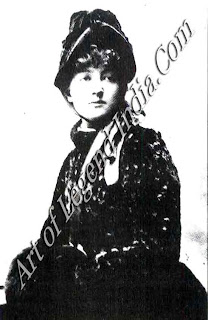
However,
Stachu also held another attraction for Munch his wife Dagny Juell. Slim,
beautiful and sensual, Ducha, as she was known by the young artists, was
herself a writer of great talent. It was she who gave the name Pan to the
magazine Stachu edited, which served as the defiant manifesto of the radical
young artists in Berlin. The art historian Julius Meier-Graefe recalled how the
group would gather in Przybyszewski's dimly lit room in Luisenstrasse: 'Against
the wall by the door stood an upright piano, a peculiar instrument. It could be
toned down by means of a lever, so that the other inmates of the house were not
disturbed even when Stachu hammered on it with his fists. One of us would dance
with Ducha, while the others looked on from the table: one spectator was Munch,
the other was generally Strindberg. The four men in the room were all in love
with Ducha, but they never showed it.' Whether Munch was really in love with
Ducha is doubtful, for he shrank from close relationships with women. Certainly
though, he was fascinated by Ducha's mysterious sexuality, and the themes of
jealousy, anxiety and despair recur in his Berlin paintings.
A BOHEMIAN ESCAPE
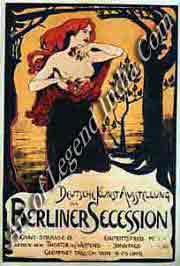 At other times, the group would gather in
Pakow at the villa of the lyric poet Richard Dehmel, whose temperament was so
violent and unpredictable that even Strindberg described him as 'a wild man'.
In Pakow, the artists could escape the grime of the city and enjoy excursions
into the surrounding countryside. But the evenings were dedicated to art.
Dehmel with his dark and brooding features would begin by reciting his latest
poem. Then Stachu would play Chopin or Schumann on Dehmel's grand piano,
accompanied by the Norwegian poet Sigbjom Obstfelder on violin. Obstfelder
would also recite his poems in the original Norwegian, relying upon the
striking rhythm and sound to convey the meaning of his work.
At other times, the group would gather in
Pakow at the villa of the lyric poet Richard Dehmel, whose temperament was so
violent and unpredictable that even Strindberg described him as 'a wild man'.
In Pakow, the artists could escape the grime of the city and enjoy excursions
into the surrounding countryside. But the evenings were dedicated to art.
Dehmel with his dark and brooding features would begin by reciting his latest
poem. Then Stachu would play Chopin or Schumann on Dehmel's grand piano,
accompanied by the Norwegian poet Sigbjom Obstfelder on violin. Obstfelder
would also recite his poems in the original Norwegian, relying upon the
striking rhythm and sound to convey the meaning of his work.
However,
these cultural evenings could also degenerate into drinking sessions which
lasted well into the next day. As ever, the beautiful Ducha was the centre of
attraction for the young men, although she alone seemed oblivious to the
effects of the alcohol which they all drank so liberally. Tragically, Ducha was
later killed by a jealous young Russian in Tiblis, who shot her through the
head with a revolver before killing himself.
THE NEW ARTISTS
As
Munch himself had suggested, it was the storm of publicity that accompanied his
exhibition at the Berlin Artists Club in 1892 that launched his career. After
the Club approved a motion by the painter Anton von Werner to close down the
exhibition, a number of progressive artists, led by Max Liebermann and Ludwig
von Hofmann, formed the Gruppe XI which became the Berlin Secession, founded in
1898. The next year, the Secession held its own exhibition, although Munch was
still considered far too outrageous to be invited to take parts.
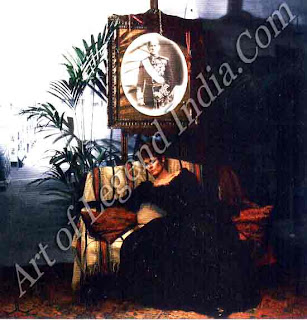
It was
not until 1902 that pictures from Munch's Frieze of Life were displayed at the
Secessionist exhibition. The exhibition marked a turning point in Munch's
career. But more importantly, it represented a turning point in the artistic
climate of Berlin itself. The young artists who met at the Black Piglet had set
in motion a new era of radical innovation, especially in painting and
literature. With the turn of the century another generation of artists took up
the banner of rebellion against traditional German values.
Munch
himself returned to Berlin in 1906 and 1907 to paint a new Frieze for the foyer
of Max Reinhardt's theatre, The Kammerspiele. He also designed sets for
Reinhardt's production of Ibsen's Ghosts and Hedda Gabler. But by then, the
Black Piglet was part of a by-gone era. Indeed the centre of German art was
shifting towards Dresden and Munich. Not until the heady years of the 1920s did
Berlin actually recapture the title of Germany's Bohemia.
Writer
– Marshall Cavendish
 At other times, the group would gather in
Pakow at the villa of the lyric poet Richard Dehmel, whose temperament was so
violent and unpredictable that even Strindberg described him as 'a wild man'.
In Pakow, the artists could escape the grime of the city and enjoy excursions
into the surrounding countryside. But the evenings were dedicated to art.
Dehmel with his dark and brooding features would begin by reciting his latest
poem. Then Stachu would play Chopin or Schumann on Dehmel's grand piano,
accompanied by the Norwegian poet Sigbjom Obstfelder on violin. Obstfelder
would also recite his poems in the original Norwegian, relying upon the
striking rhythm and sound to convey the meaning of his work.
At other times, the group would gather in
Pakow at the villa of the lyric poet Richard Dehmel, whose temperament was so
violent and unpredictable that even Strindberg described him as 'a wild man'.
In Pakow, the artists could escape the grime of the city and enjoy excursions
into the surrounding countryside. But the evenings were dedicated to art.
Dehmel with his dark and brooding features would begin by reciting his latest
poem. Then Stachu would play Chopin or Schumann on Dehmel's grand piano,
accompanied by the Norwegian poet Sigbjom Obstfelder on violin. Obstfelder
would also recite his poems in the original Norwegian, relying upon the
striking rhythm and sound to convey the meaning of his work. 
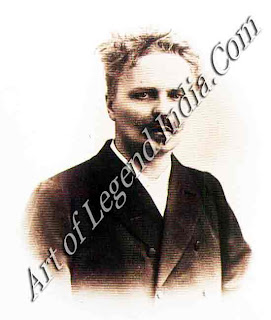
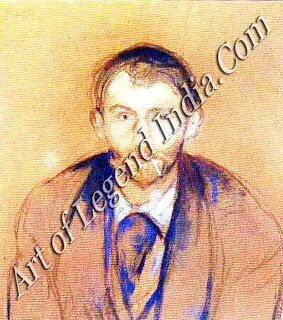













0 Response to "Norwegian Great Artist Edvard Munch - Munch's Berlin "
Post a Comment